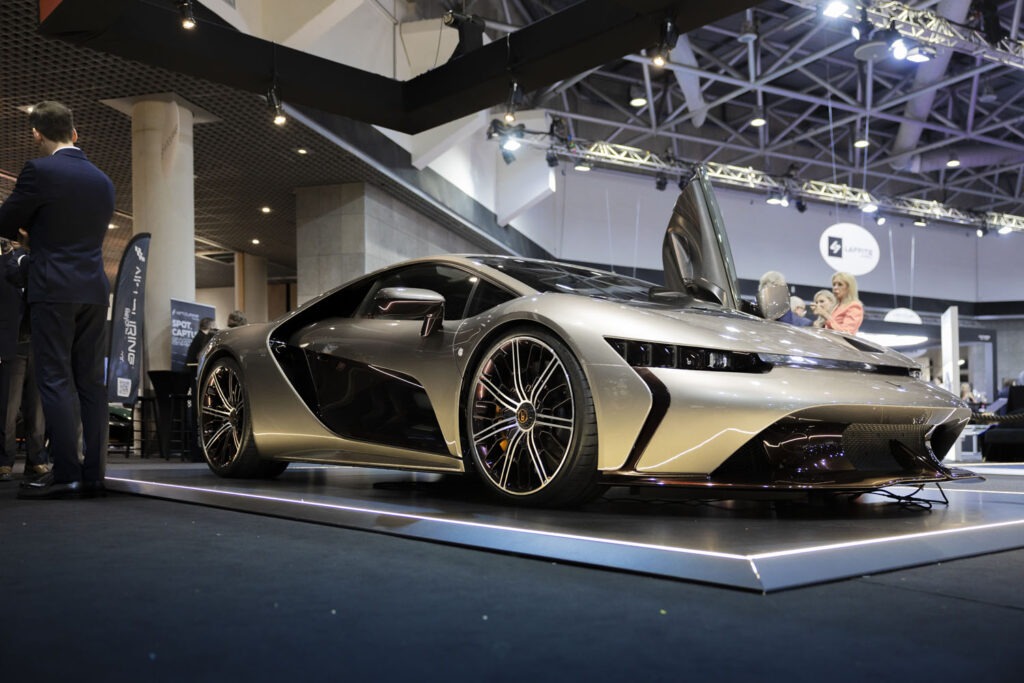
Bertone has made a monumental return to the automotive spotlight with the unveiling of its first hypercar, the GB110, at the prestigious Top Marques event in Monaco. This exclusive hypercar, limited to just 33 units, epitomizes luxury and customization, promising each owner a truly unique driving experience.
The Top Marques Monaco 2024 event was a tremendous success, attracting 29,000 visitors over five days and approximately 300 journalists from over 30 countries. The GB110‘s debut was marked by the distinguished presence of Albert II, Prince of Monaco, Pierre Dartout, Minister of State of Monaco, and Barbara Bertone, daughter of the renowned Nuccio Bertone.
Owners' Vision
Mauro and Jean-Franck Ricci, the visionary owners behind this groundbreaking project, shared their excitement: “Our passion for Bertone’s heritage has been lifelong. With over 30 years of car development experience, we embarked on a journey to create a masterpiece that celebrates Bertone’s 110th anniversary. The GB110, designed by top Italian engineers and designers, is a tribute to the legacy of Giovanni Bertone, blending tradition with cutting-edge innovation.”
Performance, Customization, and Sustainability
Giovanni Sapio, Project and Design Manager at Bertone, highlighted the car’s unique features: “The GB110 is more than just a hypercar; it’s a work of art. It’s the first hypercar to use fuel made from plastic waste, reflecting our commitment to sustainability. Equipped with all-wheel drive and a twin-turbocharged 5.2L V10 engine delivering 1,124 hp and 1,100 Nm of torque, the GB110 can accelerate from 0 to 300 km/h in 12.9 seconds. It boasts a curb weight of 1,423 kg, a top speed of 350 km/h, and is fitted with carbon-ceramic brakes for exceptional performance.”

The GB110 was introduced in a striking color combination known as Grigio Rinascimento, contrasted with Orange Black. Customization options include partial or full carbon-look bodywork, a rear wing, and a variety of interior and exterior color combinations inspired by past Bertone concept cars, allowing each owner to personalize their vehicle.
Design Philosophy
Andrea Mocellin, Design Lead for the GB110, explained the design ethos: “Our goal was to create a hypercar that is as much a piece of art as a performance vehicle. The design blends the smooth lines of the 1950s with bold, angular shapes reminiscent of the 1970s. The side view features heritage character lines from iconic models like the Stratos Zero, harmoniously blending emotion and power.”
A Tribute to Giovanni Bertone
Barbara Bertone, reflecting on the car’s significance, said: “I am thrilled to witness this ambitious project come to fruition. The GB110 is a tribute to my grandfather, Giovanni Bertone, founder of Carrozzeria Bertone in 1912. Growing up with Bertone, it is with great emotion that I see our legacy continue with such an innovative and stunning vehicle. Thanks to Mauro and Jean-Franck, Bertone is back in a remarkable way.”
The Bertone GB110 marks a new chapter for the legendary design house, blending historical reverence with futuristic innovation. As it takes its place among the world’s most exclusive hypercars, the GB110 stands as a testament to Bertone’s enduring spirit and craftsmanship.




















